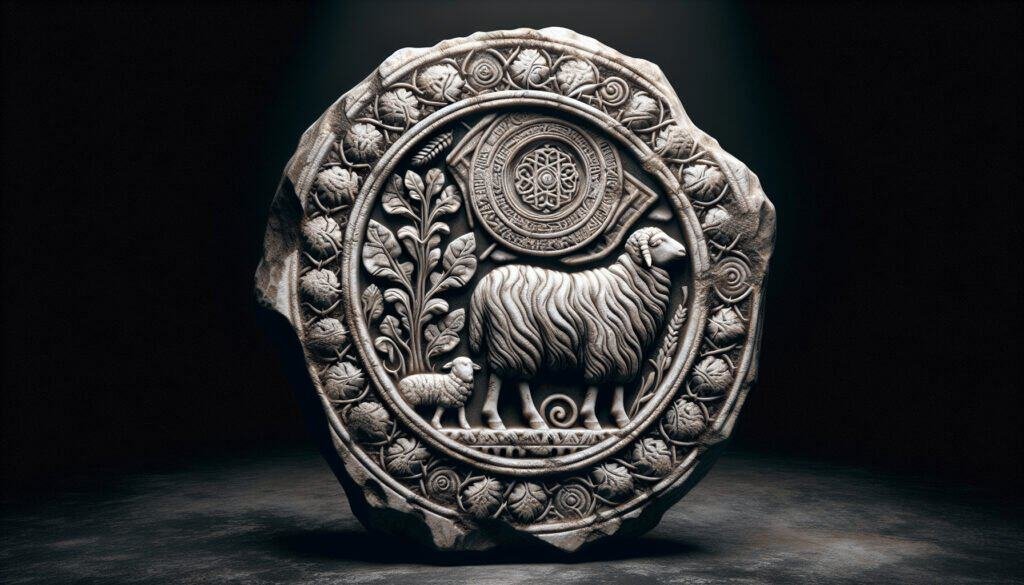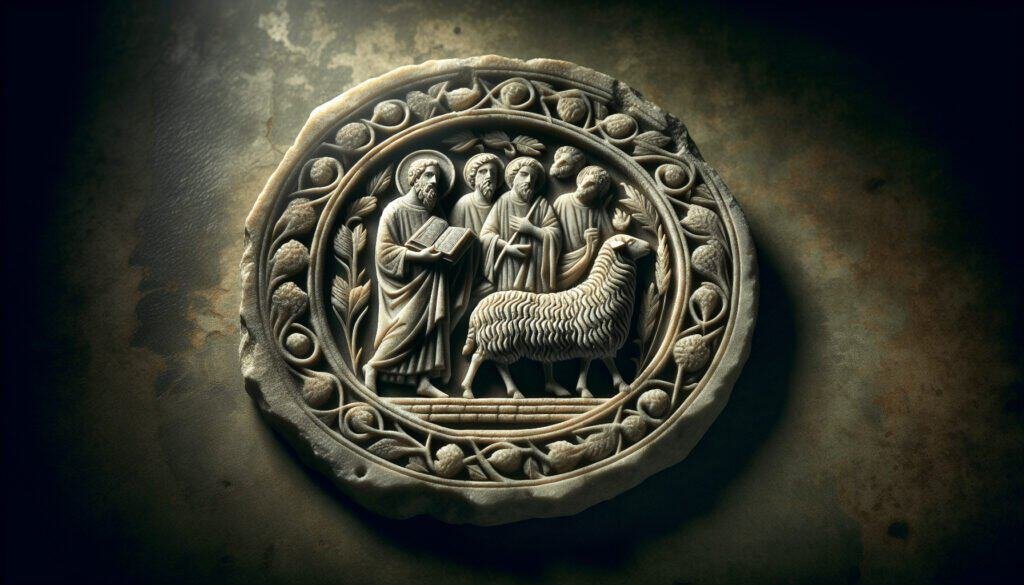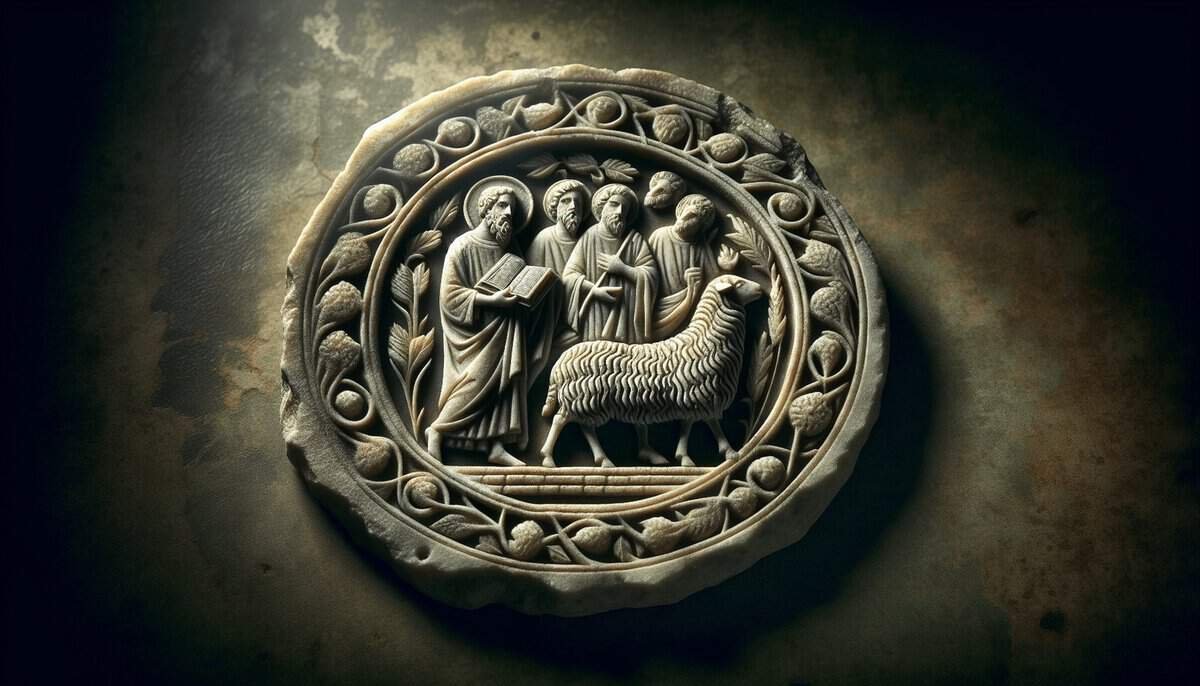What do you imagine when you think of ancient texts whispering their secrets across the ages? Perhaps you consider the Psalmic verses that have transcended time, echoing through history and leaving behind traces in the most unexpected places. What if I told you that the Jordan Slope Stone offers a glimpse into that very echo?

Unraveling the Mystery of the Jordan Slope Stone
Nestled in the rolling hills of Jordan, the Jordan Slope Stone holds a special place in both archaeological and biblical studies. Discovered among the remains of ancient settlements, this enigmatic artifact serves as a stone testament to the intersections of history, faith, and culture. As a bridge between our world and the ancient past, it is worthy of exploration.
The Archaeological Significance of the Stone
The significance of the Jordan Slope Stone lies not only in its physical attributes but also in its historical context. Unearthed from a site that is thought to date back to the time of the Psalms, the stone itself features engraved inscriptions that evoke the poetic style found in ancient Hebrew literature. Such artifacts help paint a rich tapestry of life in biblical times.
A Glimpse into the Past: Historical Context
To understand the implications of the Jordan Slope Stone, it helps to consider the era in which it existed. The time surrounding its creation was marked by profound spiritual reflection, with Psalms being a central part of Hebrew worship. These texts, rooted in deep emotional and theological resonance, served as both prayers and songs, expressing everything from joy to lament.
The Psalms: Ancient Verses with Modern Echoes
When we consider the Psalms, we delve into a wellspring of human experience. Each Psalm resonates with the collective struggles, triumphs, and hopes of the people. So, how does the Jordan Slope Stone contribute to this understanding?
Scriptural Inscriptions: A Window into Worship
The inscriptions on the Jordan Slope Stone are thought to echo themes common in the Psalms. They reflect prayers for guidance, expressions of gratitude, or laments of despair. By examining these inscriptions, you can gain insight into how ancient communities worshiped and related to their deities. The stone’s markings invite you to ponder their spiritual life, revealing layers of meaning hidden within the text.
Connecting the Dots: Inscriptions and Real Life
Isn’t it fascinating how inscriptions can tell stories? It’s more than just words etched in stone; it’s a conduit revealing daily life, societal issues, and religious practices. For example, scholars have analyzed fragments inscribed on similar stones in the region, recognizing parallels with specific Psalms. The connections highlight the integral role that scripture played in guiding everyday decisions and communal actions.
The Role of Biblical Archaeology in Unveiling History
You might wonder how archaeology can help in understanding the significance of a stone like this one. In fact, biblical archaeology plays a pivotal role in bridging ancient religious texts and historical reality.
Discoveries that Spark Debate
Every discovery, including the Jordan Slope Stone, ignites discussions among historians and theologians alike. Some may lean heavily on textual analysis, extracting theological implications, while others focus on the archaeological context to debate the authenticity and purpose of such artifacts. The discourse is rich and layered, showcasing the vitality of biblical archaeology today.
The Intersection of Text and Material Culture
We must remember that artifacts are not just cold stones; they embody the life and culture of their time. The Jordan Slope Stone provides critical evidence for understanding how the words of the Psalms made their way into the material culture of the period. This intersection invites you to contemplate how faith manifests in everyday life, resonating through rituals and communal practices.
The Shepherd’s Fragment: A Vital Link
One term you might encounter in relation to the Jordan Slope Stone is the “Shepherd’s Fragment.” This fragment, thought to be contemporaneous with the stone, serves as a vivid memento of pastoral life in ancient Israel. Let’s take a closer look at how this fragment intricately connects to the stone and the broader tapestry of biblical literature.
Cultural Context: The Life of a Shepherd
Imagine the fields where shepherds once grazed their flocks. Those shepherds, tending to their sheep, would have had a unique relationship with both their surroundings and their faith. The Shepherd’s Fragment beautifully reflects this rural spirituality, giving voice to the shepherds’ prayers and songs as captured within the Psalms.
Insights from the Shepherd’s Fragment
This fragment likely encapsulated themes of longing, protection, and divine oversight. The connection it shares with the Psalms becomes clearer when observing its poetic structure and content. As you consider the glassy features of the Jordan Slope Stone, try to visualize the cacophony of sounds – whispered prayers, rushing rivers, and sheep bleating against the backdrop of weighty theological discourse.

Cultural Significance: Beyond Religion
Isn’t it intriguing how ancient artifacts can shape our understanding of a culture? The Jordan Slope Stone, along with the Shepherd’s Fragment, can broaden your perspective beyond just religious appreciation.
A Reflection on Community
The connection between people, their environment, and their beliefs is palpable in these artifacts. They insinuate a strong sense of community among those who inscribed messages on stones and participated in rituals involving the Psalms. Reflecting on this, you might think about how today’s communities express faith and spirituality.
Understanding Identity in Ancient Times
Through these inscriptions, ancient individuals expressed their identities and affiliations. The stones were not merely for devotion but were also public displays of belonging, reflecting shared values and collective memories. This emphasis on identity resonates today, echoing through people’s modern-day practices.
Language and Communication: The Power of Writing
Writing in itself is a powerful mode of communication. The language used in inscriptions conveys motifs, beliefs, and artistic expression from a bygone era.
Scriptural Language: Hebrew Poetry
It’s worth considering the unique linguistic features present in inscriptions on the Jordan Slope Stone. The poetic qualities of Hebrew writing influence the emotive force of the Psalms, drawing you into the world of biblical expressions. By examining the language, one can appreciate the artistry involved in crafting these messages for both spiritual and poetic purposes.
The Proliferation of Textual Forms
Inscriptions represent just one form of writing among many that emerged in ancient cultures. The Psalms, in particular, served as foundational texts that paved the way for myriad interpretations, adaptations, and compositions in the centuries that followed. This evolution invites you to consider how modern literature still grapples with the same themes of lament, joy, and reflection.
Insights and Perspectives: Modern Connections
As we sit back and examine the Jordan Slope Stone and the Shepherd’s Fragment, there’s an undeniable urge to connect the past with the present. How do these ancient echoes resonate with your life today?
The Journey of Faith in a Modern World
Many people still seek guidance and affirmation through sacred texts, similar to the communities that surrounded the Jordan Slope Stone. You can see reflections of ancient struggles in contemporary spiritual practices, reminding you that the human experience remains timeless.
Community in Worship: Bridging the Gap
Religious communities today express their beliefs through various mediums, creating rituals that foster a sense of belonging. The echoes of the Psalms in the inscriptions remind you that heartfelt expressions of faith are not confined to history but are woven into the fabric of modern spirituality.
Conclusion: Timeless Echoes
As we wrap up this exploration of the Jordan Slope Stone, you’re left with a deeper understanding of how the past continuously echoes in the present. The layers of meaning embedded in the stone and the accompanying fragments challenge you to reflect on the timelessness of human experience.
Understanding the connection between these ancient texts and modern practices enriches your perspective, reminding you that the pursuit of meaning and connection transcends time. Through exploring artifacts like the Jordan Slope Stone, you’re not just uncovering history; you’re participating in a conversation that has echoed through the ages, reminding you of the universality of faith, struggle, and community.
In the end, the Jordan Slope Stone stands as a beautiful testament to the aspirations, voices, and experiences of those who walked the earth before you, proving that their echoes can still be heard today, inviting personal reflection and shared spirituality.



